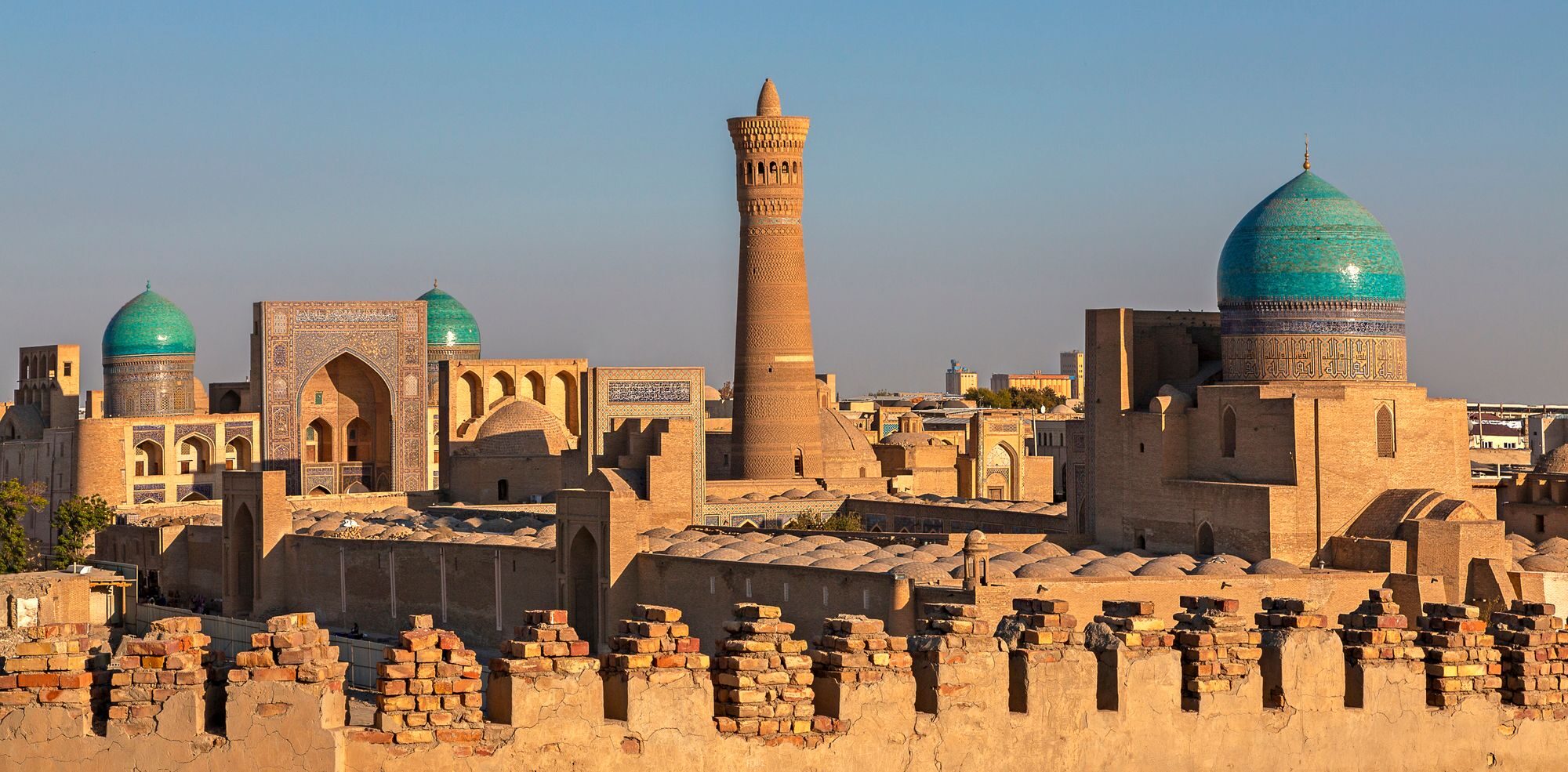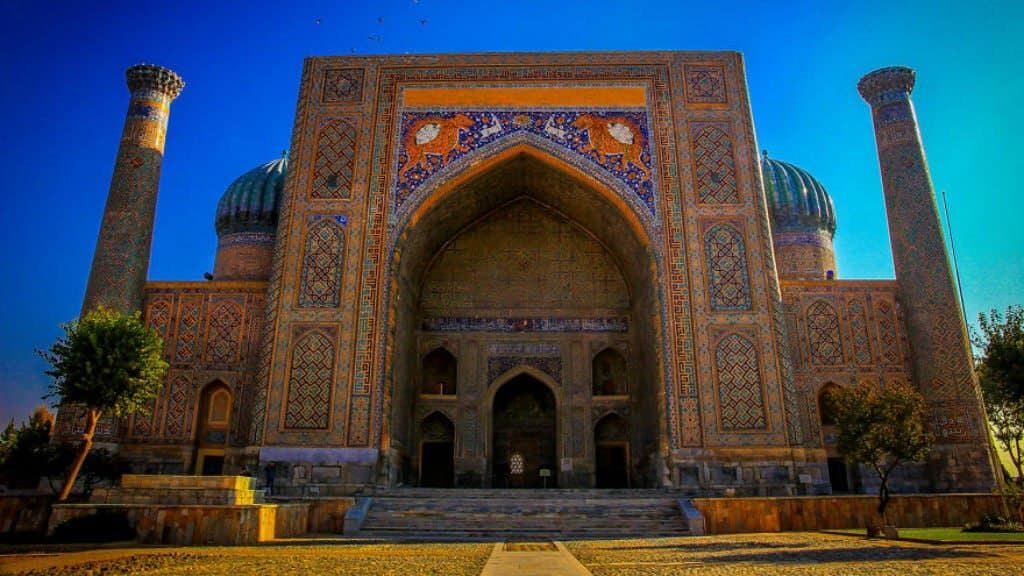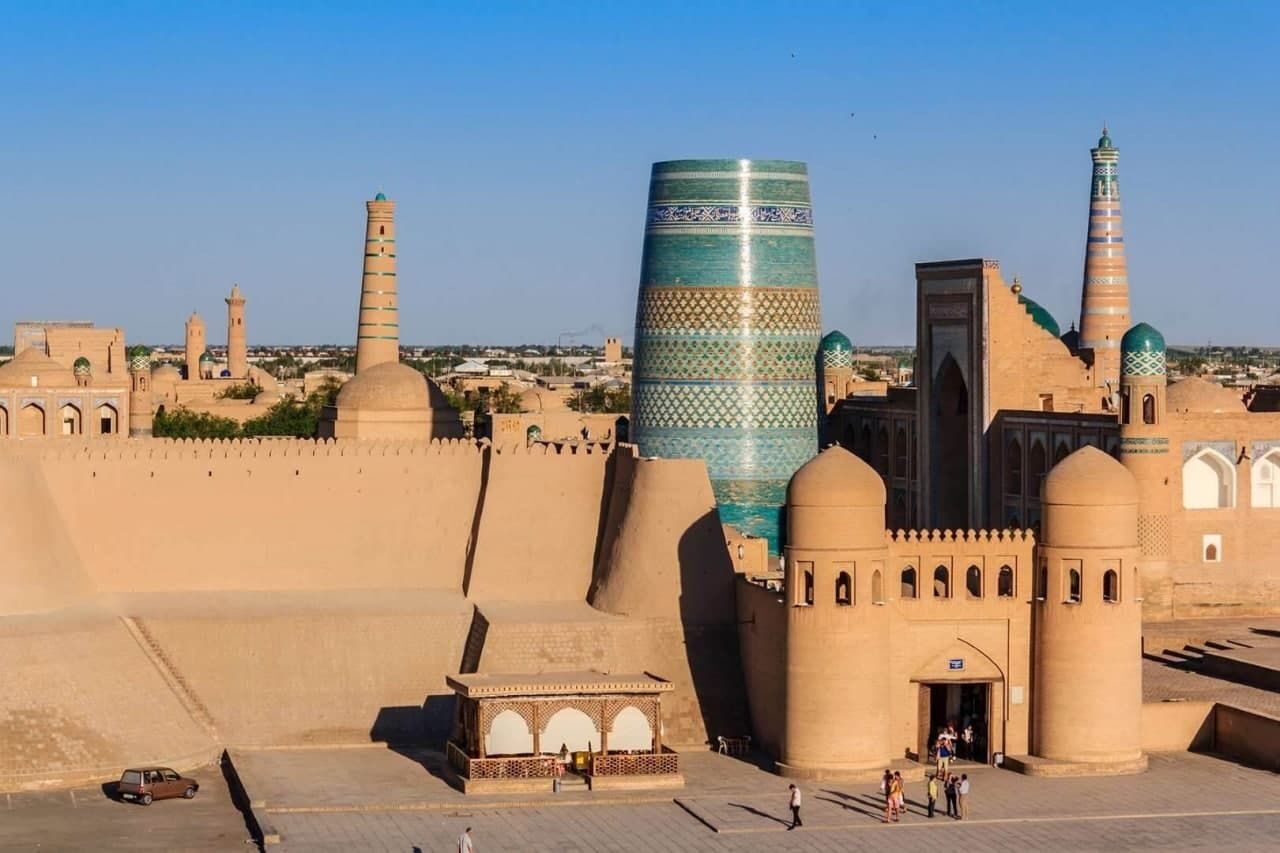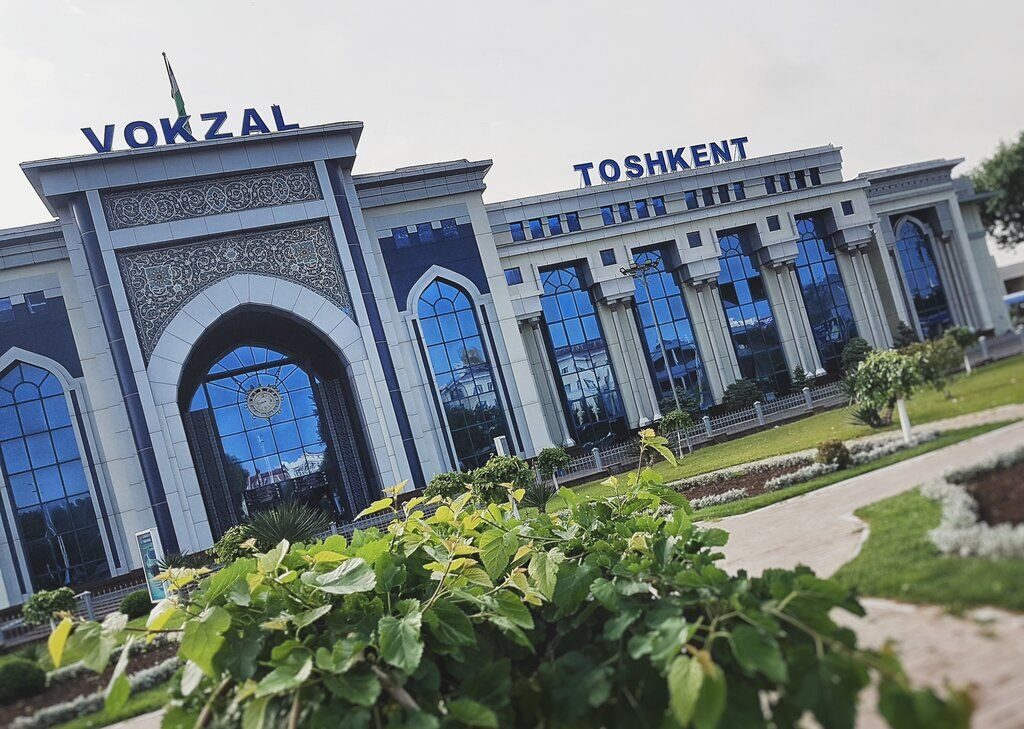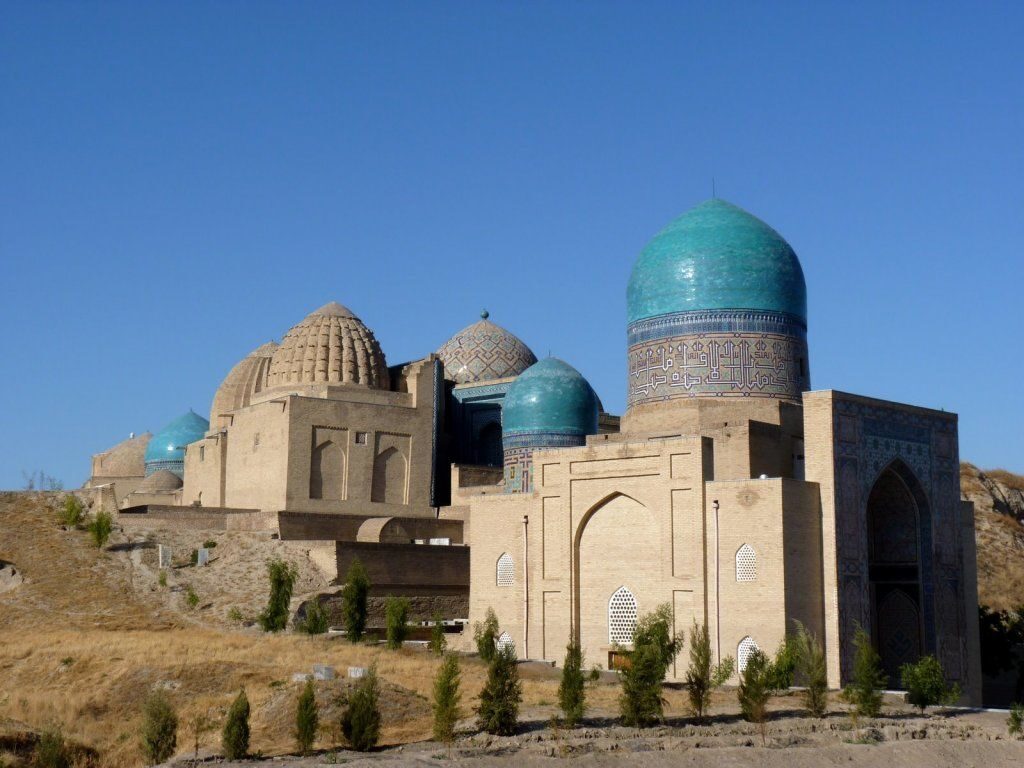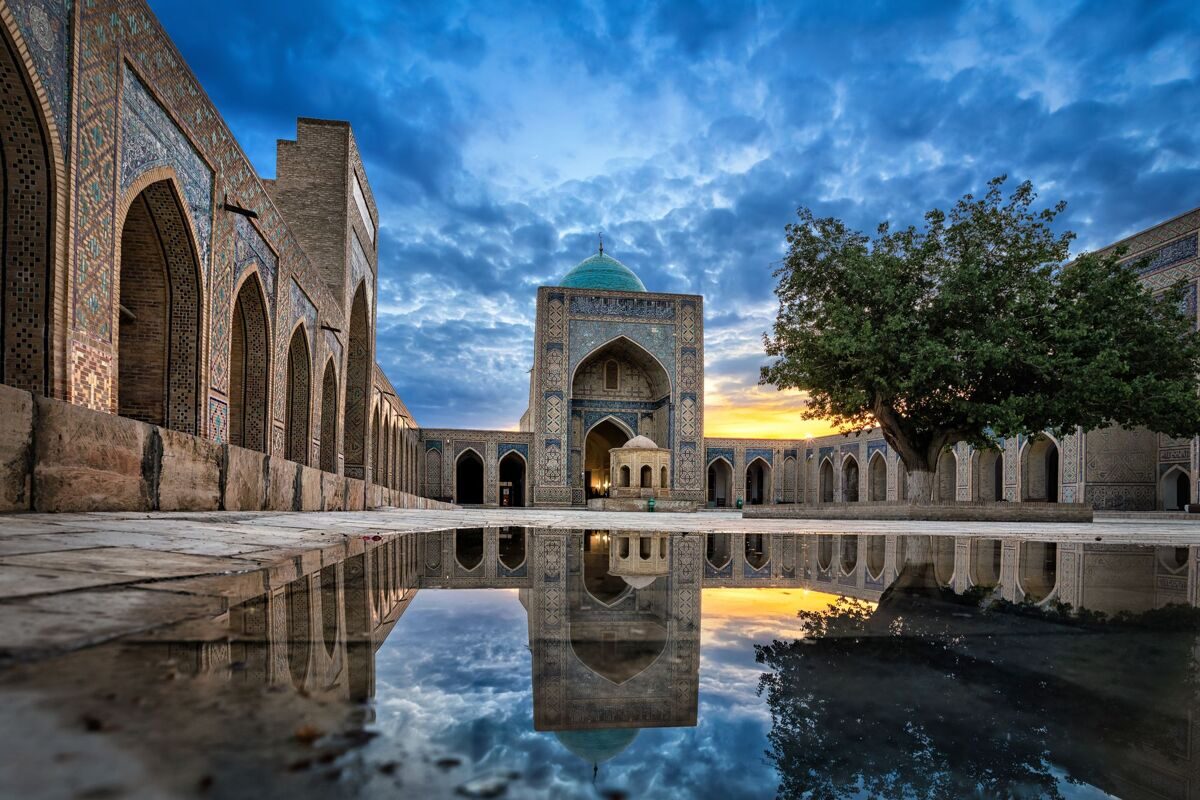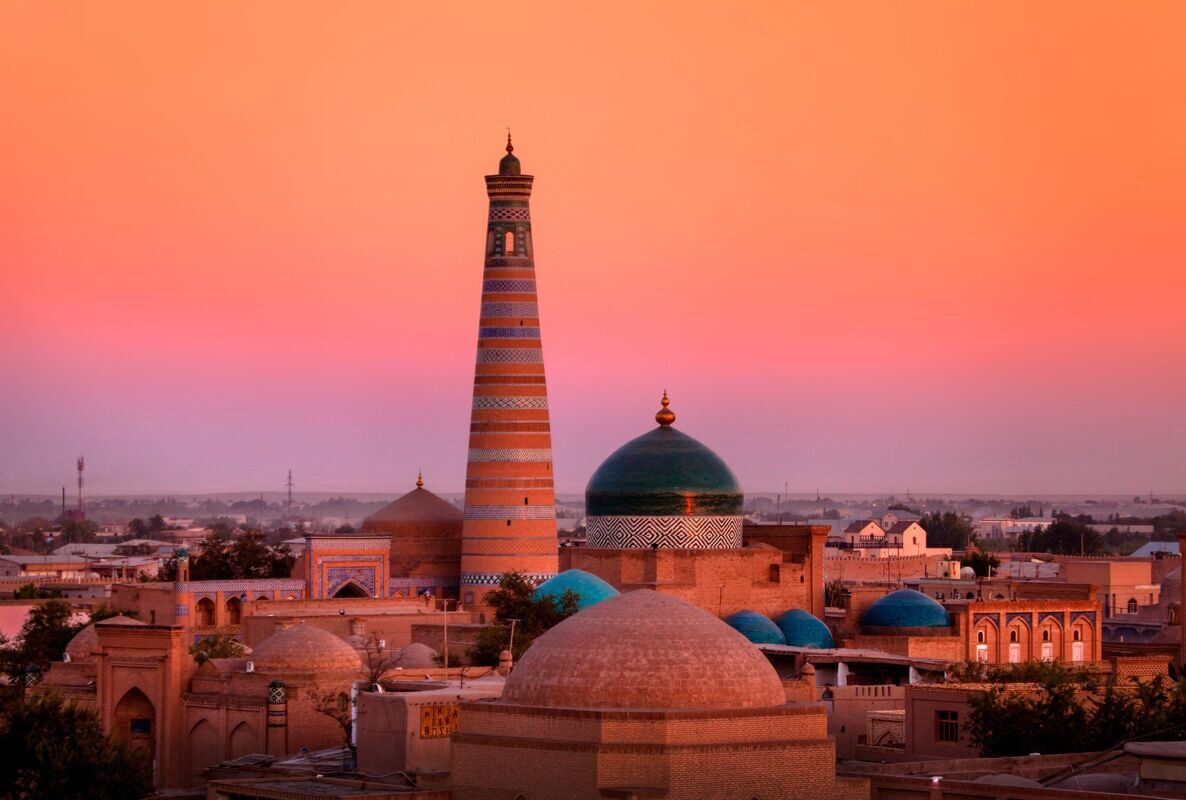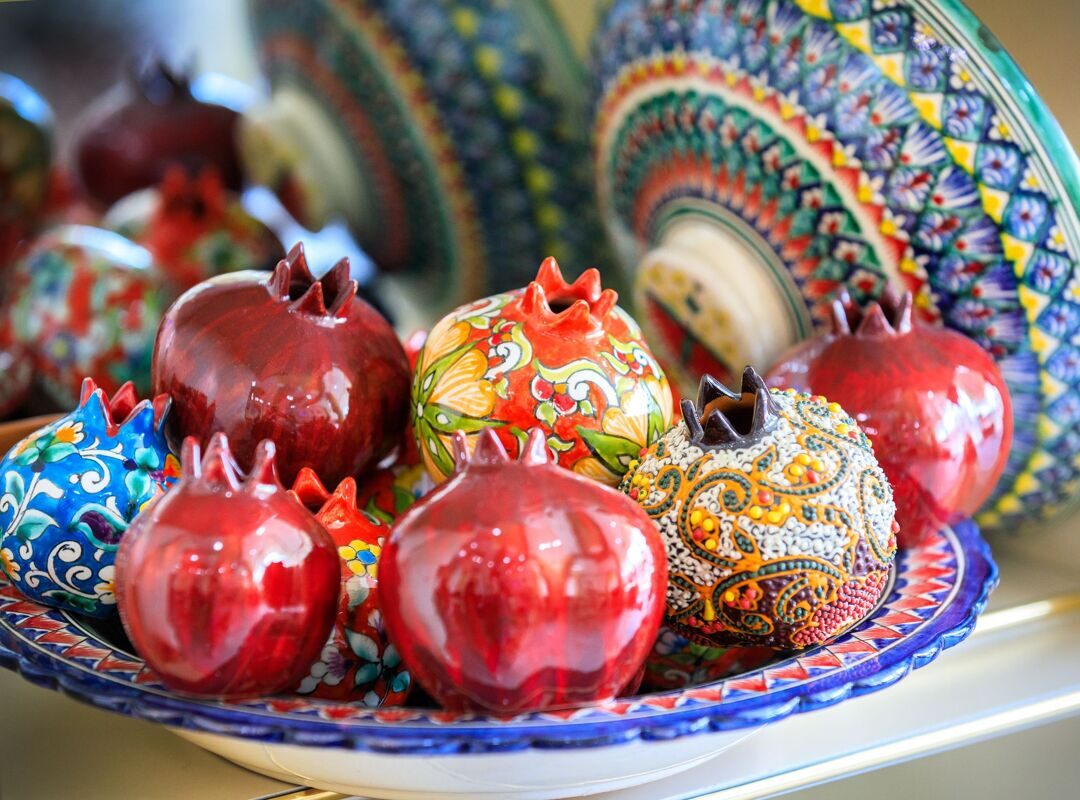


Uzbekistan

The official name is the Republic of Uzbekistan (Uzbekistan Republic, Republic of Uzbekistan). The area is 448.900 thousand km2. The population is 33.5 million people. The state language is Uzbek, about 80% of the population speaks Russian to varying degrees. The capital is the city Tashkent. National holiday - since 1991 Independence Day of the Republic of Uzbekistan September 1. Currency - sum.
Uzbekistan is a member of more than 40 international organizations, including the United Nations (since 1992) and its specialized organizations, IBRD (since 1992)IMF (since 1992), IFC, IDA (since 1992), EBRD, Asian Development Bank (since 1995), OSCE (since 1992), OIC (since 1992)CIS (since 1991), CAC (since 1994), GUUAM (since 1999), SCO (since 2001), has observer status in WTO, etc.
In the northeast it borders with Kazakhstan (2203 km), in the east and southeast with Kyrgyzstan (1099 km) and Tajikistan (1161 km), in the west with Turkmenistan (1621 km), in the extreme south with Afghanistan (137 km).
It has no access to the open seas, but includes the southern part of the Aral Sea with a coastline of 420 km.

Republican Karakalpakstan, 12 regions (Andijan, Bukhara, Dzhizak, Kashkadarya, Navoi, Namangan, Samarkand, Surkhandarya, Shyrdarya, Tashkent, 162 districts, 120 cities, Tashkent - a city of republican subordination, 113 settlements, 1461 rural gathering.

Uzbekistan is one of the cradles of world civilization. Being for many centuries the most important link of the Great Silk Road, it was a place of contact between the cultures and spiritual values of the East and the West, their active trade, economic and humanitarian contacts.
On August 31, 1991, the Supreme Council of Uzbekistan adopted a decree "On the declaration of state independence of the Republic of Uzbekistan," as well as the Law "On the Foundations of State Independence of the Republic of Uzbekistan." The Uzbek Soviet Union was renamed the Republic of Uzbekistan. On December 29, 1991, popular elections of the President of Uzbekistan were held, which became I.A. Karimov, who had previously been elected to this post at the session of the Supreme Council of Uzbekistan in March 1990.
The state structure and political system of Uzbekistan
Uzbekistan is a sovereign democratic republic, the form of government is presidential. The 1992 Constitution (amended and supplemented) is in force.

Sunni Islam confesses about 88% of the population, Christianity - 9%, other religions - 3%. In general, the population adheres to tolerance and mutual respect.

The climate of Uzbekistan is sharply continental. The average temperature in winter is from + 10 to - 8 C. Spring is beautiful and fleeting, at the end of April you can safely wear summer things (temperature in April + 20 to + 25 C). Summer in Uzbekistan is long, dry and hot, the temperature ranges from + 35 to + 45 C. The peak heat falls from June 25 to August 5 - the so-called "chill," when hot dry winds blow, precipitation is absent, the temperature in the shade reaches + 40-45 C, and in some regions of the country and higher. After the "chilly" heat is on the decline, and the most fertile time comes when the day is still hot enough, but with the onset of evening and night, the long-awaited coolness comes. Autumn in Uzbekistan is velvet, warm and generous: the shelves of the bazaars are compiled from the abundance of ripened fruits, vegetables and melons. Until the end of November, the temperature may not fall below + 10 С.

The animal world of Uzbekistan is rich and diverse. In the desert plains - an abundance of reptiles, everywhere numerous species of birds. Diversity of mammals, especially in tugai and deciduous mountain forests; in mountain steppes and meadows - relict beetle, marmots; everywhere - fox, wolf.

Uzbekistan's total mineral resource potential is estimated at $3.3 trillion. Oil reserves were explored - 350 million tons, natural gas - approx. 2 trillion m3, coal - more than 2 billion tons, gold - 4 thousand tons (4th place in the world), uranium (7th place in the world), non-ferrous and rare metals. There are large reserves of non-metallic raw materials, including phosphorites (more than 300 million tons).

Uzbek national cuisine is very rich and diverse: dozens of types of plov, manti, samsa, kebabs, lagman, khanum, mampar, chuchvara, oriental sweets and other Uzbek dishes can be tasted in almost any cafe and restaurant of the republic. Dishes of meat (lamb, beef), chicken and fish prevail. The most common dishes of Uzbek cuisine are plov (a dish of rice, oil, meat, carrots; each Uzbek city has its own unique recipe for preparing this delicious national Asian dish), kebabs, samsa baked in tandyr, shurpa, manti. In Uzbekistan, the unique art of folk crafts is developed everywhere, in many ways and in a peculiar way: ceramics, wood carving, ganch (gypsum carving), making knives, minting, carpet weaving, silk and khan atlas, weaving from willow rods, painting on skin and dried pumpkin, embroidery with gold thread and beads, susane, national clothes (chapans, duppi, lozim - women's national trouser) and shoes (sharp-nosed slippers, mahse - soft leather boots with fur), household utensils (kurpachi, beashik - children's cradles, dowry storage chests, dishes) and much more.

The city of Tashkent is the capital of Uzbekistan, which is one of the five largest cities in terms of population among the CIS countries. Ancient buildings, mosques, museums and madrasas hide between modern buildings and skyscrapers. And colorful bazaars and markets where you can buy everything are surrounded by modern shopping centers. Tashkent is a very civilized and modern city, ideal for starting to meet the East.

The city of Samarkand was founded in the eighth century BC. This is one of the oldest cities on the planet. Samarkand for more than two thousand years was a key point on the Great Silk Road. This is the precious pearl of Asia, the connection of two worlds - the West and the East. It was an important political, scientific and cultural center, preserved a huge number of historical and cultural monuments. The whole city is included in the UNESCO heritage list. Square Registan in Samarkand is the heart of Samarkand. Today, various cultural events are held on the Registan, and tourists here begin to get acquainted with the city. The main attractions of Samarkand are the Ulugbek Observatory, the Bibi-Khanum Mosque, the ShahiZinda Architectural Monument - a complex of 14 mausoleum in which the Samarkand elite is buried.


Among the mountains, almost completely surrounded by green peaks, lies the Ferghana Valley. Its territory is 22 thousand km ², and together with the area of the Tan Shan Mountains, it is almost 80 thousand km ². The valley feeds on the waters of Syr Darya and Naryn, this is an ideal place for livestock and land science. On the territory of the valley, there are several interesting cities in which tourists periodically check in.


Nukus is located in northern Uzbekistan near the Aral Sea, surrounded by three deserts - Karakum, Kyzylkum and Ustyurt. The city of Nukus is very young, compared to the millennial history of other cities of Uzbekistan, but, despite this, the land on which the city is located has an ancient cultural layer, which, according to archaeological research, dates back to the 4th century BC. - 4th century AD. The city is decorated with modern buildings, boulevards, squares and parks. The main attraction is the Karakalpakstan Art Museum named after Savitsky. Savitsky's collection attracts and amazes artists and even heads of state around the world. In addition to the museum in Nukus and its environs, there are many unique archaeological, historical and cultural monuments.
On the outskirts of Nukus, in the city of Hodgeili (which means "land of pilgrims") is the necropolis of Mizdakhkan, the grave of Adam (as Muslims call it, although scientists believe that in fact this is the burial place of Gaiomarda (Gayamarethan), the first person according to Zoroastrian mythology).

The Aral Sea is a dying sea on the border of Uzbekistan and Kazakhstan. Once it had huge natural reserves, and was a very attractive place to live. Due to the intake of water from the rivers, which were the main source of food for the lake, it began to dry out. Today it is divided into two parts: South (Big) and North (Small). Once the Aral Sea was the fourth largest lake in the world.

After the earthquake in 1966, there was an urgent need for cheap energy. It was decided to build the Charvak state district power station. A dam 168 meters high formed a blue, picturesque mountain lake. But its beautiful waters hid important archaeological sites. Once at the bottom of the lake were ancient settlements. Scientists conducted studies and photographed them, and now they have completely disappeared.

The Kyzylkum desert is one of the greatest deserts in Eurasia. Its area is 300 thousand km ². Even in the shadow, temperatures in it rise to 50 degrees, and the sand splits to 70-80 degrees. The longest tourist route between Bukhara and Khiva passes through the Kyzylkum desert. Its length is 450 km. Some species of tulips and grasses grow in the desert, jackals, snakes and birds live.

The Chimgan Mountains are 80 km from Tashkent. The mountain range is relatively low, the average height of the mountains is 1,500 meters, but is considered one of the best places for winter rest in Asia. In the mountains there are many routes for skiers and hiking. There are also conditions for mountaineering. In summer, the meadows on which flowers grow are surprisingly beautiful. Mountain villages receive tourists and provide them with housing.

Thanks to Uzbekistan's softened visa policy, which debuted in 2018, traveling to Uzbekistan has never been so easy. Citizens of almost 80 countries, including Australia, Japan, South Korea and many countries in Europe and South America, can now travel to Uzbekistan without a visa for up to 30 days. Passport holders from more than 50 additional countries, including the United States, India, Hong Kong, China and most Middle East countries, can apply online for a 30-day e-tourist visa at a price of $20. In addition, 5-day transit visas can be obtained subject to prior approval or the availability of air tickets confirming the departure of the tourist.

Uzbekistan is a safe country for tourists, where law enforcement officers regularly patrol the streets and are ready to help tourists if necessary. Also in Samarkand, Bukhara and Khiva there are tourist police officers with knowledge of foreign languages, ready to help guests of the sunny country. Travelers often note the kindness and responsiveness of the inhabitants of Uzbekistan, who will do everything possible to help the guest in need. In recent years, the country has become increasingly friendly to tourists and takes a sincerely hospitable position towards foreigners and tourists.
